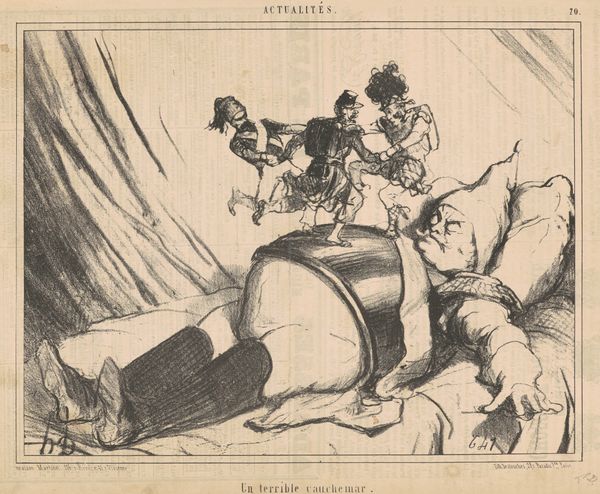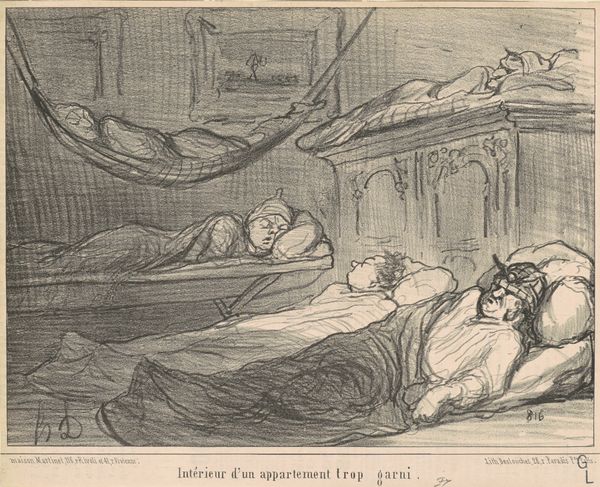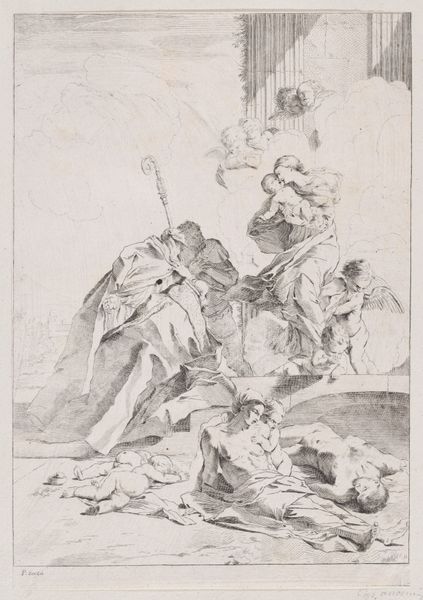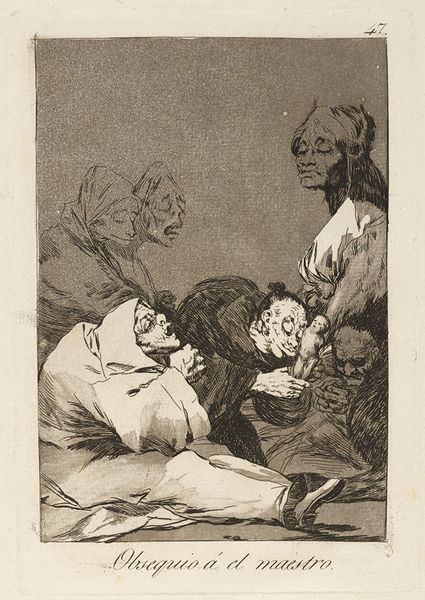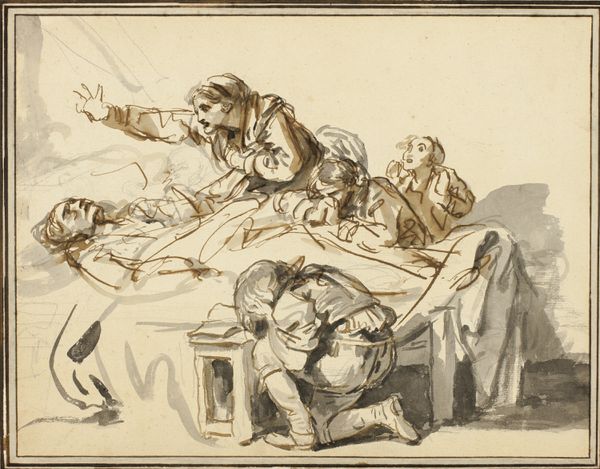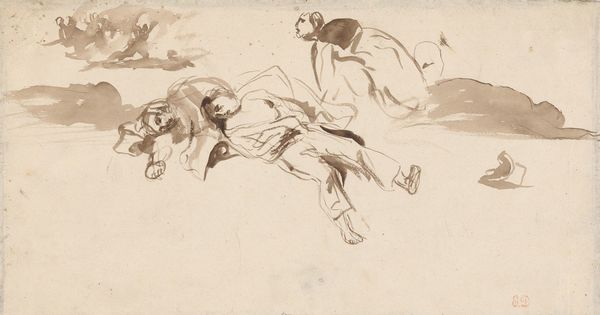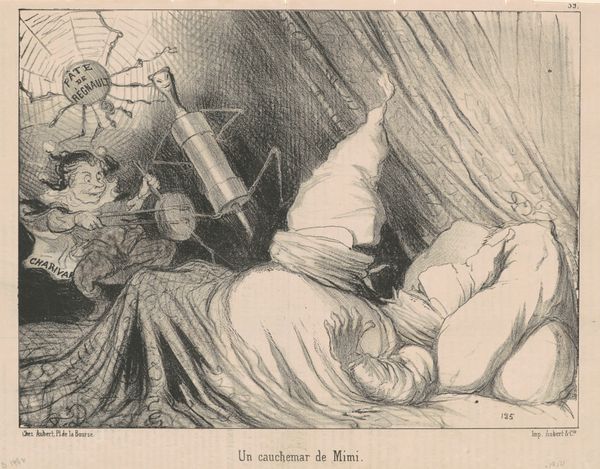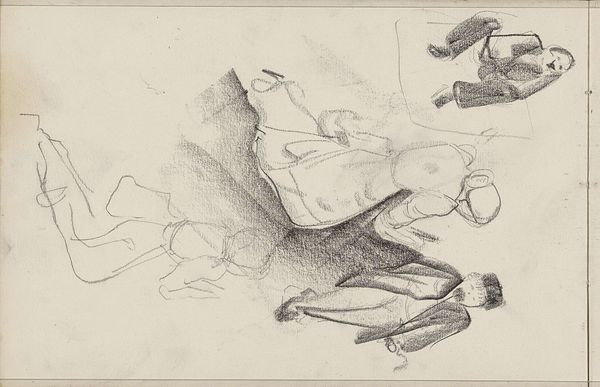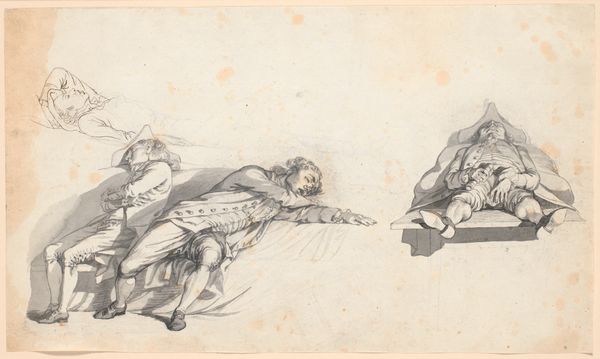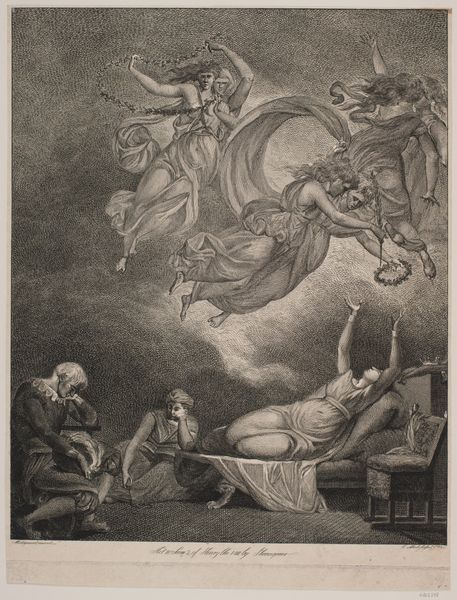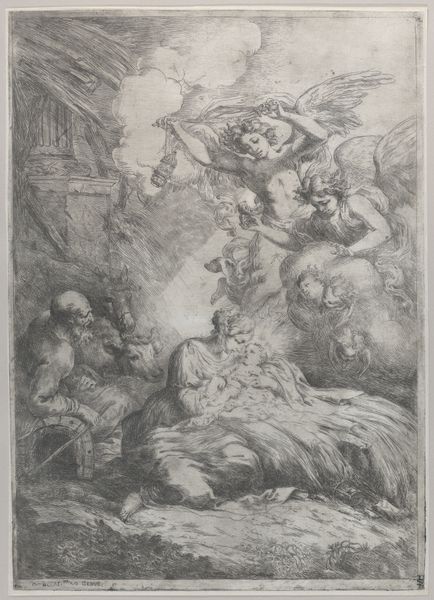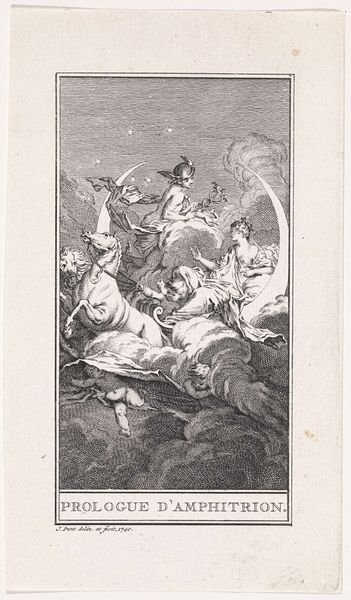
lithograph, print
#
16_19th-century
#
lithograph
# print
#
caricature
#
genre-painting
Copyright: National Gallery of Art: CC0 1.0
Honoré Daumier created this lithograph, "The Dream of a Churchwarden," using a greasy crayon on a smooth slab of limestone. It’s a quintessentially reproductive medium, ideally suited for the mass production of images, like those Daumier made for the satirical journal Le Charivari. The lithographic process allowed Daumier to capture a remarkable range of tones and textures. Look closely, and you’ll see the soft, almost velvety blacks of the churchwarden’s sleep, contrasted with the sharp, biting lines of the figures in his dream. These varying densities were achieved by applying different pressures to the crayon, and controlling the amount of ink absorbed by the stone. Daumier wielded the relatively new technology of lithography to mock the bourgeoisie, and to give visual form to pressing social and political issues of his time. The inherent reproducibility of lithography thus becomes a powerful tool for social commentary, blurring the lines between art, craft, and political critique.
Comments
No comments
Be the first to comment and join the conversation on the ultimate creative platform.
